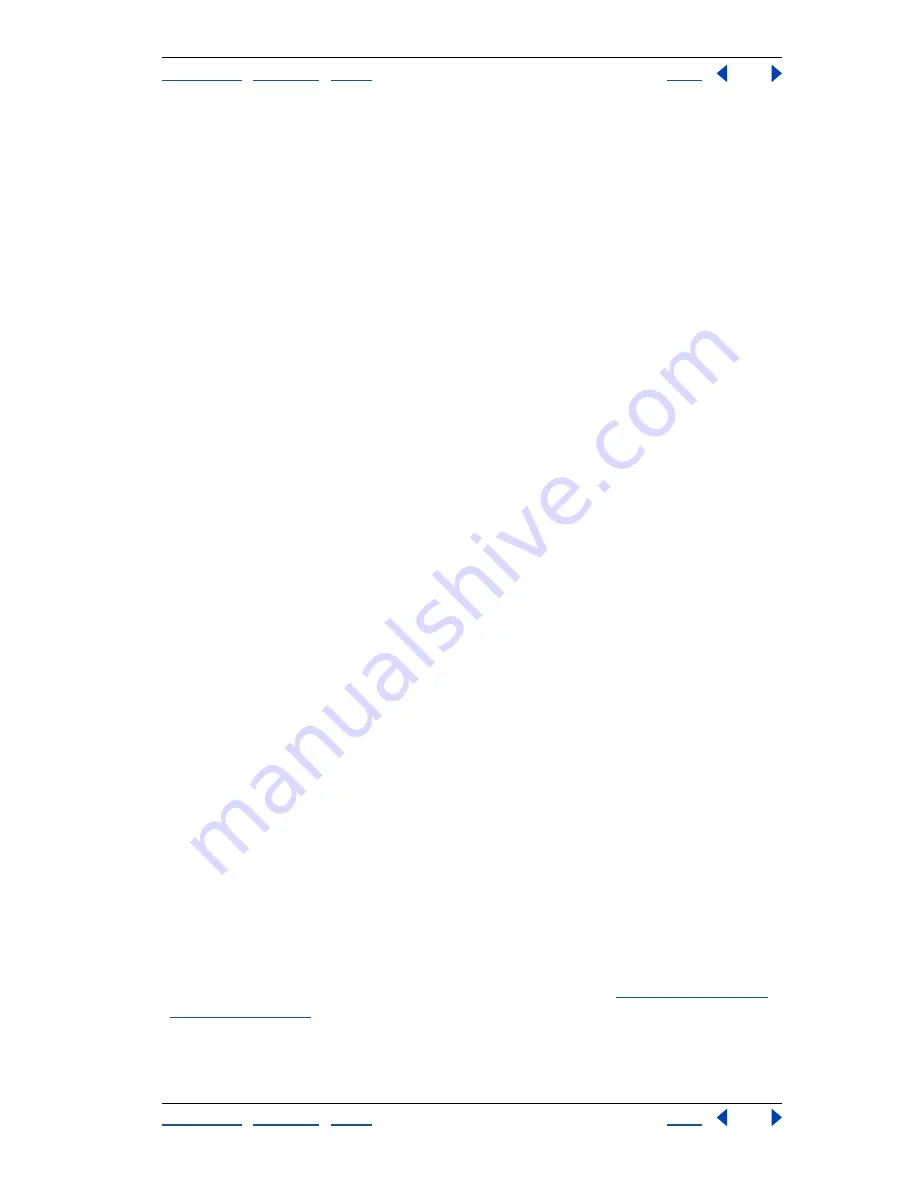
Using Help
|
Contents
|
Index
Back
335
Adobe InDesign Help
Trapping Color
Using Help
|
Contents
|
Index
Back
335
Trap Objects to Images
Ensures that vector objects (such as frames used as keylines)
trap to images, using the Trap Placement settings. If vector objects do not overlap images
in a trapping page range, consider turning this option off to speed trapping of that
page range.
Trap Images to Images
Turns on trapping along the boundary of overlapping or
abutting bitmap images. This feature is on by default.
Trap Images Internally
Turns on trapping among colors within each individual bitmap
image (not just where they touch vector artwork and text). Use this option only for page
ranges containing simple, high-contrast images, such as screen shots or cartoons. Leave it
unselected for continuous-tone and other complicated images, as it will create bad
traps. Trapping is faster when this option is unselected.
Trap 1-Bit Images
Ensures that 1-bit images trap to abutting objects. This option does
not use the Image Trap Placement settings, because 1-bit images use only one color.
In most cases, leave this option selected. In some cases, such as with 1-bit images
where pixels are widely spaced, selecting this option may darken the image and slow
the trapping.
Trapping with blacks and rich blacks
The value you type for Black Color in the Trap Style dialog box will determine what
InDesign considers to be a solid black and a rich black. A
rich black
is any black color that
uses a
support screen
—adding percentages of one or more process inks to strengthen
the black.
The Black Color setting is useful when you must compensate for extreme dot gain (as
when using low-grade paper stock). These situations cause black percentages lower
than 100% to print as solid areas. By screening back blacks or rich blacks (using tints of
solid black) and decreasing the Black Color setting from its default of 100%, you can
compensate for dot gain and ensure that the trapping engine will apply the proper trap
width and placement to black objects.
When a color reaches the Black Color value, the Black width value is applied to all abutting
colors, and
keepaway traps
are applied to rich black areas using the Black width value.
If support screens extend all the way to the edge of a black area, any misregistration will
cause the edges of support screens to become visible, creating an unwanted halo or
distorting the edges of objects. The trapping engine uses a keepaway
,
or a
holdback,
placement for rich blacks to keep support screens a specified distance away from edges
of reversed-out or light elements in the foreground, so that the light elements retain their
sharpness. You control the distance of support screens from the edges of black areas by
specifying the Black width value.
Note:
Don’t worry that the Black width setting will be too wide for trapping thin elements,
such as black keylines around graphics. In those cases, the trapping engine automatically
overrides the Black width setting and limits the trap to half the width of the thin element.
To set the trap width for colors next to black:
1
Open the Trap Style dialog box for a new or existing style. (See
“Using the Trap Styles
palette” on page 327
.)






























